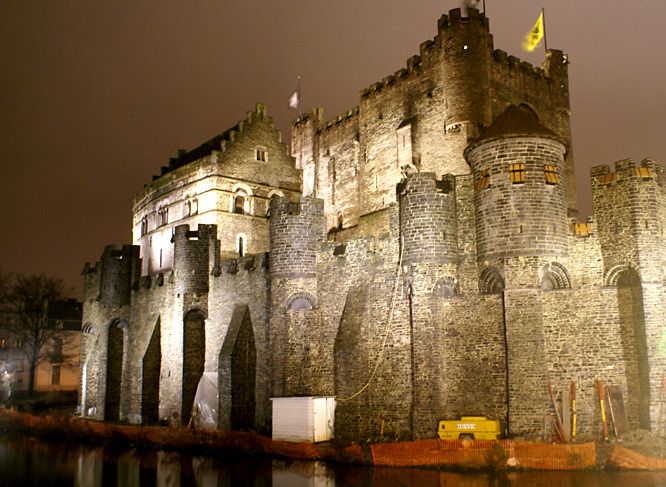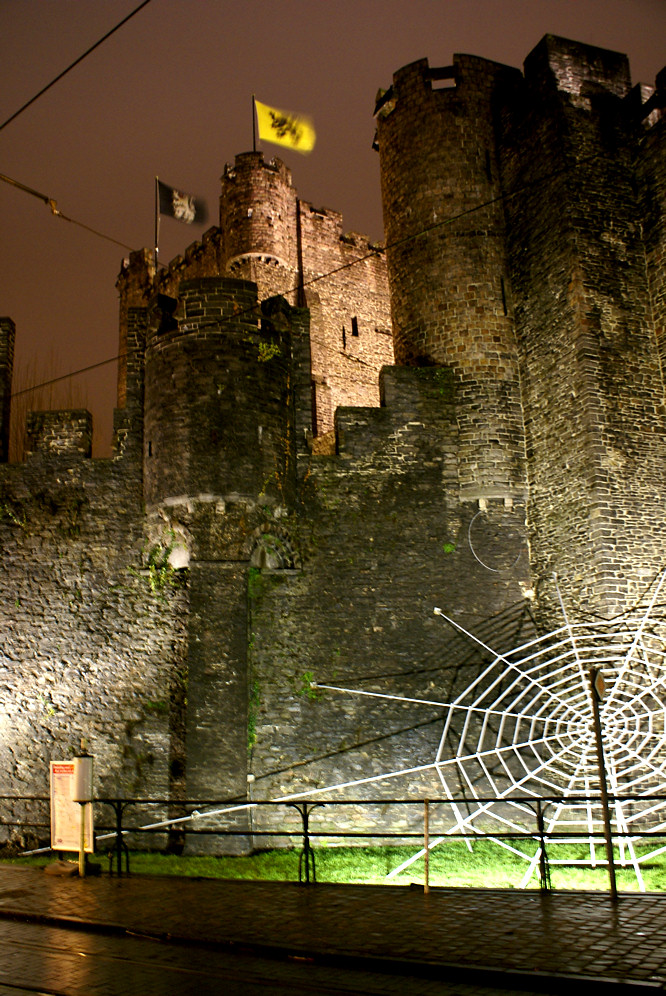Ghent's Ghent Castle of the Counts at night
The original Gravensteen castle was built around 868 by Count Baldwin I to defend against Viking attacks. He chose a high sand dune as the spot for the castle. It started as a wooden fort. Round the central building were some small buildings to store food. A large fire raged through the castle in 1176.

It was rebuilt in stone and expanded by the Count Filips of Flanders around 1180. In the middle of the 10th century the area was called novum castellum' or new castle.
Phillip of Alsace who was count of Flanders between 1157 and 1191 authorise some more building work. It functioned as the center of the Count's power during the early Middle-Ages, and housed the residences of the count, his servants and guards, as well as dungeons.
The Gravensteen castle was the seat of the Council of Flanders. Gravensteen means Castle of the Counts, and looks the part. It is what a castle is supposed to look like, moat, high walls and towers. Children love all the nooks and crannies to explore. The counts of Flanders had castles built in the principal cities of the county because they had to maintain law and order. The castle of Gent is the only one which survived the centuries.

Inside the Castle there is a museum about the history of prison life and organization and a collection of medieval torture instruments. The teenagers love the ghoulish torture equipment on display that were used during the middle ages. There are thumbscrews, a rack and executioners swords to be seen. There is even a guillotine. The inner cellar room of the castle was used as a stable where horses had a place to be treated and fed. Gravensteen has been used for different purposes.
The counts moved to more comfortable mansions. In the 18th century the Austrians ruled the area and lost interest in the castle, they sold it. Jean-Denis Brismaille bought it and made an industrial complex out of the castle. It was used as the Mint and later as the main prison of Gent. It housed metalworkers and a cotton spinning factory. In the inner court little houses where built for the textile workers of the cotton plant.
To the majority of the citizens of Ghent though out the centuries the castle was a symbol of power, oppression, death and awful torture. In the late 19th century the Gravensteen complex was reassessed. The city council bought the entire site from different private owners. Everything that was not out of the original Doornik stone was removed. A great castle emerged. Architect Joseph De Waele chose a romantic interpretation of the castle in the time of count Filips.
One of the joys of Ghent is wandering around the old city centre at night. The Gent city council have used great skill to make sure that the most important historic buildings are illuminated by floodlights. For the children there is a spider's web climbing frame that looks spectacular at night.
Travel books

